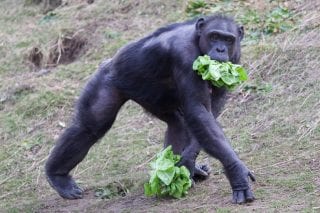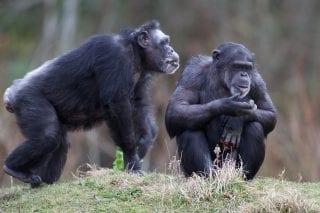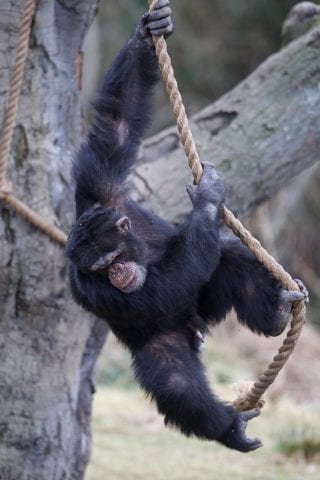Fun facts
Our closest living relatives
Chimpanzees share over 98% of their genetic material with humans, and along with bonobos, are our closest living relatives. Humans and chimps are believed to share a common ancestor who lived 7 to 13 million years ago.
Tools
Chimpanzees are one of the few species we know to use tools. Different groups of chimpanzees use tools in different ways including using sticks to retrieve termites from their mounds and dig insects out of logs. They also use stones to open nuts, and leaves to scoop up drinking water.
Pharmacists
Zoopharmacognosy is the name given a type of ‘animal self-medication’, referring to the phenomenon of animal species knowing the things in their natural environment they can eat to prevent disease, kill viruses or aid digestion. An example of this with chimpanzees is when they eat the bitter Vernonia plant, a plant species known to have medicinal benefits. Because of the bitter taste of the plant the chimpanzees’ grimace when they are eating it, it is thought that it is eaten mostly for medicinal reasons rather than taste.
Seed dispersal
Chimpanzees play an important role in their environment as seed dispersers. When they eat fruit, they spread the seeds of that fruit through their poo. The seeds then grow into trees in other locations, leading to a healthier tree population. Chimpanzees are capable of eating much larger seeds than most animals in their ecosystem, so many plant species depend on large animals such as chimps to spread their seeds.
Don't smile...
Chimpanzees use facial expressions to show emotions, but a human smile that shows all your teeth is seen as a threatening expression to chimpanzees.
Reflections
Chimpanzees are one of the few species that can recognise themselves in a mirror.
Communication
A chimpanzee will sometimes hug, pat or brush the face of another chimpanzee to try to reassure them or calm them down. They have a range of vocalisations including barks, hoots and grunts. One well-known chimpanzee vocalisation is called the ‘pant-hoot’. It is believed that each individual has his or her own distinctive pant-hoot, so that they can be easily identified.



